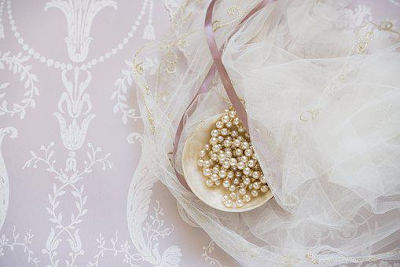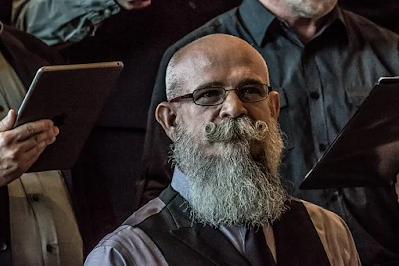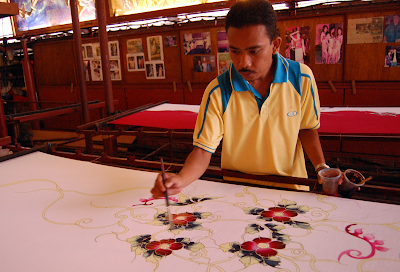Featured
- Get link
- X
- Other Apps
HISTORY OF DRESS IN CENTRAL ASIA .
The ethnic origins of the people in Central Asia are as diverse as their clothing patterns.
Even in the early 2000s, tribal groups living in remote valleys dressed in distinctive ways, highlighting their individuality with their fabrics, skills, and accessories.
In Central Asia, the designation of areas with boundaries is a relatively new development.
People used to be able to freely move about and mix.
The nomadic peoples' annual voyage followed a defined course known as "The Way," and they went across numerous areas for special marketplaces or reunions of different tribal groupings.
Turkestan was the name given to the entire region before it was divided into Turkmenistan, Kazakistan, Kyrgyzstan, Uzbekistan, and Tajikistan during the Soviet era.
Uzbekistan, the nation with the greatest population, is home to a considerable number of Tajiks, Kazaks, and Turkomans.
The Ferghana Valley, which spans Tajikistan and Kyrgyzstan and extends all the way to Osh, features a culture that is more close to Uzbek than Kyrgyz customs.
Despite the fact that the dress is different when viewed on individuals, the primary garment's fundamental construction is relatively similar.
This is probably true of all horse-riding nomad civilizations, which influenced the Central Asian people's clothing.
It's also worth noting that males and women wear comparable basic attire.
Men and women wore the kurta, a sort of tunic or shirt, with drawstring pantaloons, the salwar, which were roomy at the top and tapered down to the cuffs, and were typically embellished with embroidery or woven tapes.
The design on the tunic is global.
It's formed of a single row width of cotton or silk that's approximately the same width as the shoulders and was folded over to cover the torso, descending to about 4 inches (10 cm) from the ankles.
The neck was cut in a circular shape; earlier pieces had an open shoulder cut, while later ones had a cut from the middle of the neck.
The sleeves were likewise straight, with the sleeve opening reaching below the armpit and sewed into the sides and body piece.
Below the sleeves, diagonally cut portions were joined to the side of the tunic's body, thin at the top and larger at the bottom.
They gave the garment its form.
Gussets would be inserted between the sides and the sleeves on the area connecting the sleeve, allowing for more movement.
A girdle, futa, or a length of cotton or silk, either one color, striped, or patterned, was worn wrapped around the waist to support the waist while men and women walked across mountainous terrain carrying heavy goods.
They wore an open coat, chapan, of cotton or silk material over this garment, which was either padded for winter or plain, depending on the time of year and the user's position.
The khalat was a more sophisticated stylized silk coat made of striped silk, cot ton, or abr (ikat) silk with elaborately patterned patterns.
To protect the fabric, they were always lined, and the lining was often made of hand-printed cotton material.
In the winter, sheepskin jackets with embroidered were worn.
To show their wealth, men often wore a plethora of khalat, one on top of the other.
They started with the most basic at the bottom and worked their way up to the emir's silk brocaded or velvet khalat.
Women often wore a munisak as an undershirt and a tunic on top.
Women, too, wore more than one tunic and a shaped chapan on top in certain situations.
All of the apertures in the dress worn adjacent to the body were embroidered.
This was not merely for show, but also to keep the wearer safe.
Around the collar, sleeves, and side openings, the neck was adorned with intricate embroidery.
The salwar cuffs were additionally embroidered or zef decorated with woven tapes.
These tapes were weaved on a tablet and had intricate designs.
The tablet woven velvet tapes used to decorate the kahalats were the best.
The front of the men's chapans or khalats were open and had to be closed with a shawl or a leather belt with elaborate buckles.
When appearing before the emir, all courtiers were required to wear the belt as a sign of servitude.
The headdress was the most ornate component of the outfit.
The headgear was worn by men, women, and children, and it varied by area.
The ethnic group and locality might be determined by looking at the em broidery on the hat.
Hand-stitched and embroidered skullcaps were the most frequent.
Both men and women wore turbans.
The larger the turban, the more powerful the individual.
In Kyrgyzstan, women wore ornate turbans with silver and gold jewels designed specifically for the headgear.
Turban fabrics, which might be made of cotton or silk, were woven by experts.
The chashme bulbul, or nightingale's eye design, indigo blue and white checks were very well loved.
The extravagant turban worn in public was based on the skullcap worn by males.
The headdresses worn by young Kazak and Kyrgyzi ladies were the most extravagant.
Saukele, the tall conical hat, was approximately 28 inches (70 cm) tall.
It was constructed of felt and was bordered with fur around the rim.
It was coated with velvet or silk and had a velvet or silk lining.
It was ornately ornamented with coral, turquoise, pearl threads, silver and gold pendants, and coins, among other things.
These hereditary headdresses, which were handed down from generation to generation, were also worn by the ladies of Karakalapak, a rural location near the Aral Sea.
As it is related with the renowned Saka—tigra khanda Saka, or Scythian with pointed caps, the usage of such pointed caps may be an old custom stemming from the clothing of the Scythian tribes of classical periods.
The Turkoman married lady wore an ornate headgear with silver and gold work and a lavishly embroidered shawl that draped over her head and covered her whole body.
The back of the mantle includes faux sleeves.
To shield the youngsters from demonic influences and the evil eye, they were clothed with great care.
Children's silk clothes would be adorned with silver amulets as protection devices.
The importance of accessories in creating a distinctive dress is revealed in a study of different ethnic styles of Central Asian dress.
"Everyone knows how to put on a dress, but not everyone understands how to carry it off," as one Uzbek lady put it, is a very genuine sign of a well-dressed woman among these nomadic peoples.
Though there are significant ties between the area's clothing traditions, they are prone to change.
The factors that impact a shift in fashion differ depending on what is significant to their particular group.
Changes in the past were less drastic, and they were more or less variations on the same theme.
Traveler's accounts, which include descriptions of people's attire during the previous few of centuries, show how styles have changed.
The Soviet influence did bring about changes in style, particularly in metropolitan areas, but in rural regions and among the elderly, the style of clothing has mostly remained intact.
Uzbekistan.
The kurta and salwar were the men's and women's basic outfits, but they wore a complete pheran over it, which was typically made of atlas, woven silk, satin, or the blended cotton and silk material popular among the ladies.
They would wear abr, the brilliantly colored ikat weave, for important occasions.
These would be embroidered throughout the neck and sleeves, as well as on the edges or trimmed with tablet woven tapes around the edges.
When meeting guests or leaving the home, a coat was worn, and the head was covered with an embroidered hat and a big shawl.
For the winter, the coat and even the overshirt would be padded, and the coat would be lined with printed cotton and silk-edged.
They also wore ton janksh, embroidered oversleeves that were worn separately from the kurta and removed when the main garment was washed.
Over the head was worn an embroidered cloak, kok koilek, with imitation sleeves.
Outside the house, this was an important component of their attire; elder ladies wore white, while young married women wore red.
At the cuffs and below the kurta, the salwar was likewise lavishly embroidered.
Scarves and shawls of various varieties were used to wrap around the waist.
Embroidered wool or Bokhara's gossamer floating resist-printed silks would be used for the headscarves.
Young brides wore highly embroidered gowns and a face veil that was intricately woven and adorned.
The bride's gown was often blue and lavishly decorated, with glittering plaques adorning it.
The Karakalpak region, which is near the Aral Sea and fairly distant, contains extremely delicate embroidered costumes and accessories as head and nape of the neck covers, which were regarded particularly fragile.
Bokhara was the epicenter of gold embroidery, which was created using a process known as couching to give it a rich, elevated appearance.
Couching is an embroidery method that involves laying threads in a pattern on the surface of a base fabric and sewing them to the cloth using little stitches that cross over the design threads.
Women wore these outer robes on special occasions, while males wore them as khilats presented to them by the emir.
It was customary for the emir to provide the male head of a household who was hired by the emir or a member of the court a complete "head to foot" suit of garments.
The kurta, or salwar, was worn by men with a cummerbund, or sash.
He wore a robe that was open in the front and was kept together by a woven ribbon or a belt.
Skullcaps, which existed in a variety of forms and sizes, were an important feature of Uzbek national attire.
Some are conical and serve as the turban's base, while others are four-sided, spherical, or cupola-shaped.
Whether it was a modest gray or black hat with white embroidery or a lavish multicolored embroidery, all of the caps were embroidered.
Until recently, the hat would indicate the wearer's ethnicity and locality.
Expensive gold embroidered crowns with fringes were specially prepared for the young newlyweds.
Turkmenistan
The Altai Mountains were home to the Turkoman nomadic people.
Their forefathers were the Oghuz, and the "Book of Oghuz, Oguz Nama" has been preserved as a record of their traditions.
They were known as Turkomans after settling in the area east and south of the Aral Sea about the eleventh century.
There were two confederations in the fifteenth century:
- Qara-Qoyunlu, or "they of the black sheep,"
- and Aq-Qoyunlu, or "they of the white sheep."
A number of the leaders entered Iran as shepherds and conquered it in order to remain rulers; however, a large number of them stayed in the area and developed their own way of life with their swift horses, which were their pride and lifeline, and their sheep, camels, and other cattle, which they migrated according to the seasonal cycle of available pastureland and water.
Their mobility, however, was limited to a radius of around 31 miles (50 km).
The circular, felt-covered buildings known as Oy, yurts, were an important component of Turkoman culture, and even agricultural groups travelled to summer camps and lived in yurts.
The tunic is comparable to the Turkoman women's attire.
It is manufactured of silk since there are no restrictions on the usage of that material.
Because of the loom, the silk has a short width and is usually woven in red with a yellow stripe along the selvage.
The garment takes on a highly definite linear quality by merging the side panels and keeping the yellow line.
In ordinary life, most ladies wear a tunic that opens up to the breasts and is fastened at the neck with a silver button.
They wear an inner tunic with embroidered edges for special occasions.
The embroidery stitches, on the other hand, are limited since they are a variety of looping stitches that produce a rich texture.
The main stitch looks like a feather stitch.
The Yomut uses the svyme chain stitch as well as the stem stitch.
A raised decorative herringbone is used to link two pieces of fabric in a frock.
Sleeves with extra embroidery are also worn.
They conceal this with a chabut, a short-sleeved jacket covered with coins or silver plaques and finished with intricate silver pendants.
Some tribes also wear long coats, which were popular in the early twentieth century.
The garment was tied together by a checkered sash known as sal qusak, which hung in the front.
Silver belts are sometimes used, but only under special circumstances.
Turkoman ladies wear an intricate high headgear with a basket-like base constructed of coiled and sewn native grass and coated in silk.
It is then embellished with silver coins, plaques, and chains, and a shawl is draped over it, held by flat carnelian-studded chains.
They then drape the most stunning piece of embroidery—a cloak with chyrpy, carrying faux sleeves—atop it all.
The hues change depending on the wearer's age.
Young women are dressed in blue or black, middle-aged women in yellow, and the matriarch is dressed in white.
Aldani, a simple headdress made of a long, folded scarf, was worn with a skullcap that was worn like a turban with its ends dangling from the left shoulder.
One edge of the scarf is often left loose to be used as a face veil.
The cuffs of the salwar pantaloons are lavishly embroidered in striped thick silk material.
The cuffs are attached to the saggy top, which is composed of plain cotton.
From underneath the shirt, just the embroidered portion is visible.
At the hip, the pantaloons are knotted.
The men wore silk tunics with side openings.
A woven sash was worn around the waist, with a salwar that was tight at the bottom and loose at the top.
Long leather boots were worn with woolen puttees with decorative edges that wrapped their legs from the ankle to the calf.
They were dressed in sheepskin jackets or long coats with fleece linings, which were quite warm.
The fleece is visible around the edges.
Unweaned lambs with a curled fleece approximately 4 inches (10 cms) long have the nicest coat.
Shepherds used to wear yapunca, a felted garment that protected them from the cold, rain, and snow.
Their bushy hat with a long fleece, which stretched over the forehead and shielded the eyes from sunlight as well as snow and rain, is the most distinguishing feature.
Celebrations were also held using the abr silk khalat.
These have mostly stayed in the family chests as keepsakes, seldom being worn.
Kyrgyzstan.
Kyrgyzstan is a hilly nation with deserts on all sides.
It is separated from the Ferghana Valley, which occupies part of the country's southern region, by the Tien Shan ("Heavenly Mountains") range.
The rich cultural traditions of the Kyrgyz are seen in the northern mountainous portions of the nation, where they settled after migrating from the Altai Mountains in southern Siberia.
They are described as having pale complexion, green eyes, and red hair in the Chinese chronicles.
The arrival of the Mongols in the eleventh century resulted in the creation of a highly tough, attractive people, whom even the Soviets could not modify.
The Kyrgyz have always lived in yurts as a nomadic people.
Even in the early 2000s, many Kyrgyz families had a yurt in their yard, and the death ritual is still held in a yurt in Bishkek, the capital city.
Manas, a 100-year-old epic, depicts the story of a warrior king and his people's migrations.
It is the world's longest epic, and the Manaschi, who recite it, ensure that the oral tradition is preserved.
Men's traditional clothing includes terishym, or leather pants, which are also worn by women while moving or assisting with animals.
For everyday use, they are paired with high leather boots, chaitik, or embroidered massey.
Over it, they wear a shirt and, in certain cases, a ton, a leather jacket with a fur inside.
Older men wear a long coat, chepken, that is kept together by a sash or a leather belt with silver buckles, kur, for formal events.
Extensive hook embroidery was used on very fine suede long coats with extra-length sleeves.
A conical embroidered felt hat with embroidery and a tassel at the top, known as ak-kalpak, is the traditional headgear.
The urban males wore flat, gold embroidered hats with fur inside and fur outlining the headgear for important occasions.
The ladies wore a long shirt, which was usually composed of striped red and black cotton known as kalami or abr, a cotton and silk ikat.
They would dress in a sleeveless jacket, a padded long coat, and leather shoes for everyday usage.
They wore a bonnet with embroidered ear caps and a turban or a decorative hat over it.
The nape of the neck, which was thought to be susceptible to black magic, was covered with long, embroidered plait covers.
The vividly colored ikat striped cotton of Kodzhent, which was given a glossy polished finish with the application of egg white, was liked by the ladies.
This used as both a sash and a scarf.
Koinok, or elaborate gowns, were constructed of silken patterned material known as kimkap, which is likely derived from the word for India's woven gold brocade, the kimkhab.
Beldemehi, a wraparound skirt, was worn on important occasions.
It was either made of velvet or silk, and had a leather and fur lining as well as elaborate stitching.
This could be easily worn on horseback and would provide enough coverage and warmth while they rode their mounts.
Brides wore the bishmant, an ornate gown with a tall, conical headpiece adorned with gold, silver, pearls, and valuable stones, as well as a very decorative veil that covered just the front of the face, with a gossamer multicolored veil floating beyond the conical crown.
Older ladies wore chosa, which are elegant turbans composed of fine cotton.
An embroidered strap kept the turban in place.
A draped material wrapped the matriarch's neck and front of the neck from behind the turban, giving her considerable respect.
Even in the early 2000s, the elder married lady astride a horse with her ornate outfit and headgear could be seen in the mountain villages accompanying the men, who were dressed in their best embroidered leather jackets and hats and had hooded hawks on their wrists.
The jewelry is an important aspect of the outfit.
On the garments, elaborate buttons were employed.
Iymek, a pair of long silver and coral earrings that reached over 9 inches in length, framed the face.
As protective shields, large pendants were worn on the breasts, and connected chains of pendants and corals were sewed to the coats.
The men's leather jackets and belts were adorned with silver buckles.
They were safeguarded from the evil eye by engraved emblems of the sun, moon, stars, falcon (their totemic bird), and others.
The silversmith's mystical talent connected with fire and molten metal provided the wearer with the strength to tackle life's challenges.
See also:
Cotton; Jewelry; Silk; Textiles, Central Asian; Traditional Dress.
References And Further Reading:
Beresneva, L. The Decorative and Applied Art of Turkmenia. Leningrad: Aurora Art Publishers, 1976.
Burkett, Mary. The Art of the Felt Maker. Kendal, U.K.: Albert Hall Art Gallery, 1979.
Gafiar, Gulyam. Folk Art of Uzbekistan. Tashkent, Uzbekistan: Literature and Art Publishing House, 1979.
Geiger, Agnes. A History of Textile Art. London: Maney Publishing, 1979.
Harvery Janet. Traditional Textiles of Central Asia. London: Thames and Hudson, Inc., 1977.
Sidenvagen, Vid. On the Silk Road. Göteborg, Sweden: Historiska Museum, 1986.
Sumner, Christina, and Heleanor Fellham. Beyond the Silk Road.
Sydney, Australia: Arts of Central Asia; Power House Publishing, 1999.
- Get link
- X
- Other Apps
















